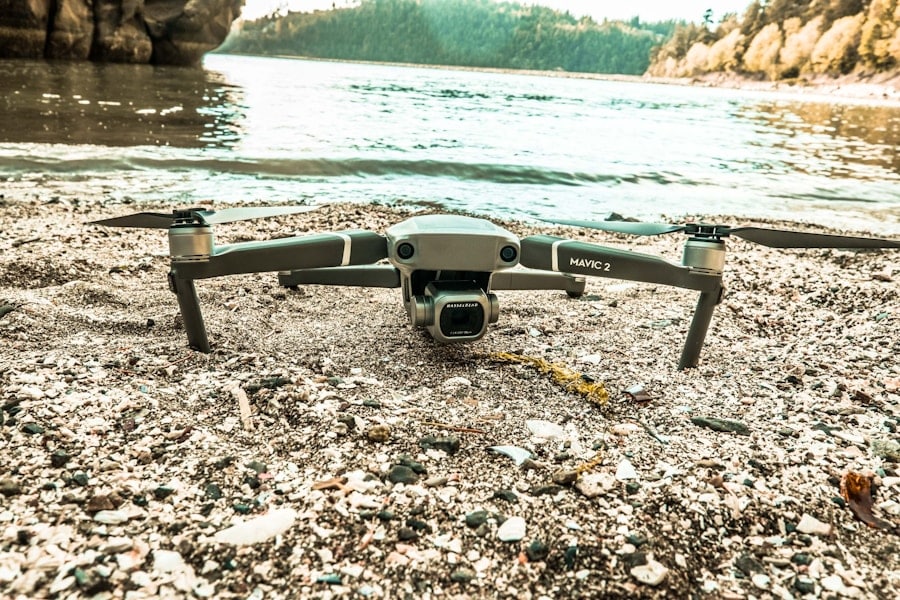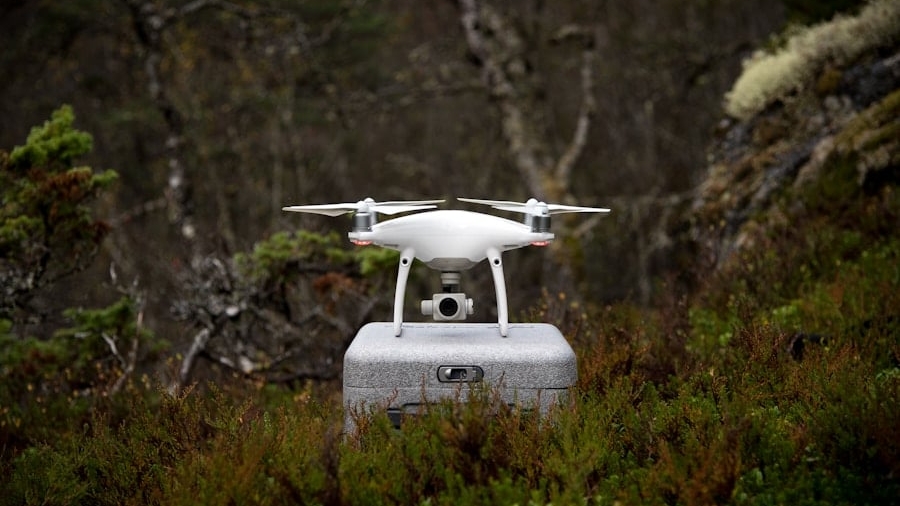In recent years, the intersection of technology and conservation has gained significant attention, particularly with the advent of drone technology. Drones, or unmanned aerial vehicles (UAVs), have emerged as powerful tools in the fight against biodiversity loss, especially concerning endangered species. These flying machines, equipped with high-resolution cameras and advanced sensors, offer a unique vantage point that was previously unattainable.
They can cover vast areas of land quickly and efficiently, providing critical data that can inform conservation strategies. As the global biodiversity crisis intensifies, the application of drones in monitoring and protecting endangered species has become increasingly vital. The plight of endangered species is a pressing concern for ecologists and conservationists worldwide.
With habitat destruction, climate change, and poaching threatening numerous species, innovative solutions are necessary to ensure their survival. Drones represent a transformative approach to wildlife conservation, enabling researchers to gather data that was once labor-intensive and time-consuming. By harnessing aerial technology, conservationists can monitor animal populations, assess habitat conditions, and implement protective measures more effectively than ever before.
This article delves into the multifaceted role of drones in the conservation of endangered species, exploring their applications, successes, challenges, and future potential.
Key Takeaways
- Drones are increasingly being used to monitor and protect endangered species, offering a non-invasive and cost-effective solution.
- Drones are being used to monitor endangered species, providing valuable data on population size, behavior, and habitat use.
- Drones are being used to combat poaching by monitoring and patrolling protected areas, providing real-time surveillance and deterring illegal activities.
- Drones are being used for habitat mapping, providing detailed information on the landscape and helping to identify critical habitats for endangered species.
- Drones are being used to relocate endangered species to safer areas, reducing human-wildlife conflict and improving conservation efforts.
Monitoring Endangered Species with Drones
One of the most significant advantages of using drones in conservation is their ability to monitor endangered species in real-time. Traditional methods of wildlife monitoring often involve ground surveys, which can be labor-intensive and may disturb the animals being studied. Drones can fly over habitats without causing disruption, capturing high-resolution images and videos that provide valuable insights into animal behavior and population dynamics.
For instance, researchers have successfully used drones to monitor the nesting sites of sea turtles along coastlines, allowing them to track nesting success rates without disturbing the turtles. Moreover, drones equipped with thermal imaging cameras can detect heat signatures from animals, making it easier to locate elusive or nocturnal species. This capability is particularly beneficial for monitoring species that are difficult to observe during daylight hours or those that inhabit dense forests.
For example, in the case of the endangered Sumatran orangutan, drones have been employed to survey their habitats in Indonesia’s rainforests. By capturing aerial footage, researchers can assess population densities and identify critical areas for conservation efforts. The ability to gather such data efficiently allows for more informed decision-making regarding habitat protection and restoration.
Using Drones to Combat Poaching

Poaching remains one of the most significant threats to endangered species worldwide, particularly for iconic animals such as elephants and rhinos. Drones have emerged as a formidable tool in the fight against poaching by providing real-time surveillance over vast areas that are often difficult to patrol on foot or by vehicle. Equipped with high-definition cameras and night vision capabilities, drones can monitor protected areas for illegal activities, alerting rangers to potential poaching incidents before they escalate.
In several African countries, anti-poaching units have integrated drone technology into their operations with remarkable success. For instance, in Namibia’s Etosha National Park, drones have been deployed to monitor elephant herds and detect poachers from the air. The aerial perspective allows rangers to respond quickly to threats, significantly increasing their chances of apprehending poachers before they can harm wildlife.
Additionally, drones can be used to create detailed maps of poaching hotspots, enabling conservationists to allocate resources more effectively and implement targeted anti-poaching strategies.
Drones and Habitat Mapping for Endangered Species
Habitat loss is a primary driver of species endangerment, making habitat mapping an essential component of conservation efforts. Drones are revolutionizing how researchers map ecosystems by providing high-resolution imagery that can reveal intricate details about vegetation cover, land use changes, and habitat fragmentation. This information is crucial for understanding the specific needs of endangered species and developing effective management plans.
For example, in the Amazon rainforest, drones have been utilized to map deforestation patterns and assess the health of various ecosystems. By analyzing aerial imagery, researchers can identify areas that require immediate protection or restoration efforts. Furthermore, drones can facilitate the monitoring of habitat changes over time, allowing conservationists to evaluate the effectiveness of their interventions.
In regions where endangered species rely on specific habitats for survival, such as wetlands or coastal areas, accurate mapping is vital for ensuring these environments are preserved.
Relocating Endangered Species with Drones
In some cases, relocating endangered species may be necessary to ensure their survival, particularly when their habitats are threatened by human activities or natural disasters. Drones can play a crucial role in this process by assisting in the safe transport of animals to new locations. For instance, drones equipped with specialized containers can be used to transport small animals or eggs without causing stress or harm.
One notable example is the use of drones in relocating juvenile sea turtles from nesting sites to safer habitats away from human interference. By utilizing drones for this purpose, conservationists can minimize the risk of predation and increase the chances of survival for these vulnerable creatures. Additionally, drones can help monitor the success of relocation efforts by tracking the movements of relocated animals in their new environments.
This data is invaluable for assessing whether the relocation was successful and if further interventions are needed.
Challenges and Limitations of Using Drones for Endangered Species

Despite their numerous advantages, the use of drones in conservation is not without challenges and limitations. One significant concern is regulatory restrictions surrounding drone usage in various countries. Many regions have strict regulations governing airspace and drone operations, which can hinder conservation efforts.
Obtaining permits for drone flights can be a lengthy process, delaying critical monitoring or intervention activities. Another challenge lies in the technical limitations of drone technology itself. While drones are capable of capturing high-resolution images and videos, they may struggle in adverse weather conditions such as heavy rain or strong winds.
Additionally, battery life remains a constraint; most consumer-grade drones have limited flight times before needing recharging or replacement. This limitation can restrict the area that can be surveyed in a single flight and may necessitate multiple trips to gather comprehensive data.
Success Stories of Drones in Endangered Species Conservation
Numerous success stories highlight the effectiveness of drones in endangered species conservation efforts around the globe. In South Africa’s Kruger National Park, drones have been instrumental in monitoring rhino populations and combating poaching activities. The park’s anti-poaching unit has reported a significant decrease in rhino poaching incidents since implementing drone surveillance as part of their strategy.
The ability to monitor vast areas quickly has allowed rangers to respond more effectively to threats. Another compelling example comes from Australia’s Great Barrier Reef, where drones are being used to monitor coral health and assess the impact of climate change on marine ecosystems. Researchers have employed drones equipped with multispectral cameras to capture images that reveal coral bleaching events and other stressors affecting marine life.
This data is crucial for developing strategies aimed at protecting not only coral reefs but also the myriad species that depend on these ecosystems for survival.
The Future of Drones in Endangered Species Conservation
As technology continues to advance at a rapid pace, the future of drones in endangered species conservation looks promising. Innovations such as artificial intelligence (AI) and machine learning are being integrated into drone operations, allowing for more sophisticated data analysis and interpretation. For instance, AI algorithms can analyze aerial imagery to identify specific species or detect changes in habitat conditions automatically.
Moreover, as drone technology becomes more accessible and affordable, it is likely that smaller conservation organizations will also adopt these tools for their projects. This democratization of technology could lead to a broader range of applications in wildlife conservation across diverse ecosystems worldwide. Additionally, collaborations between tech companies and conservation organizations may yield new solutions tailored specifically for addressing challenges faced by endangered species.
In conclusion, while challenges remain in implementing drone technology effectively within conservation efforts, the potential benefits are substantial. As we continue to explore innovative ways to protect our planet’s biodiversity, drones will undoubtedly play an increasingly vital role in safeguarding endangered species for future generations.
Drones have revolutionized conservation efforts by aiding in the tracking and relocation of endangered species. These unmanned aerial vehicles provide researchers with valuable data on animal populations and habitats, allowing for more effective conservation strategies. In a related article, The Top 5 Smartwatches of 2023, highlights the latest advancements in wearable technology that can also play a role in environmental monitoring and research. Just as drones have transformed conservation practices, smartwatches offer innovative tools for data collection and analysis in various fields.
FAQs
What are drones?
Drones, also known as unmanned aerial vehicles (UAVs), are aircraft that are operated without a human pilot on board. They can be controlled remotely by a human operator or autonomously by onboard computers.
How are drones being used to track and relocate endangered species?
Drones are being used to track and monitor endangered species by capturing high-resolution images and videos of their habitats. This data helps conservationists and researchers to study the behavior and movement patterns of these species. Drones are also being used to locate and relocate endangered species to safer habitats, away from threats such as poaching or habitat destruction.
What are the benefits of using drones for tracking and relocating endangered species?
Using drones for tracking and relocating endangered species provides several benefits. Drones can cover large areas of land quickly and efficiently, providing valuable data for conservation efforts. They also reduce the risk to human researchers who may otherwise have to venture into dangerous or remote areas to track these species. Additionally, drones can capture detailed imagery and data that can be used to better understand the needs of endangered species and inform conservation strategies.
What are some examples of endangered species that have been tracked and relocated using drones?
Drones have been used to track and relocate a variety of endangered species, including rhinos, elephants, orangutans, and sea turtles. In some cases, drones have been instrumental in locating and monitoring these species in their natural habitats, as well as in identifying suitable new habitats for relocation efforts.
Are there any challenges or limitations to using drones for tracking and relocating endangered species?
While drones offer many advantages for tracking and relocating endangered species, there are also challenges and limitations to consider. These may include regulatory restrictions on drone use in certain areas, limitations on flight time and range, and the potential for disturbance to the animals being tracked. Additionally, drones require skilled operators and careful planning to ensure their use is effective and ethical.

